The moment is picture-perfect. Your furry best friend jumps onto the leather sofa while you’re reading a good book, kneading their paws and purring happily on the cushion beside you. Then you hear that sickening, faint scrrrtch. The tiny, evident scars left behind make your heart sink. All of a sudden, your love for your pet and your exquisite furniture are at war.
But what if you didn’t have to choose? Learning how to repair cat scratches on leather furniture might be simpler than you think.
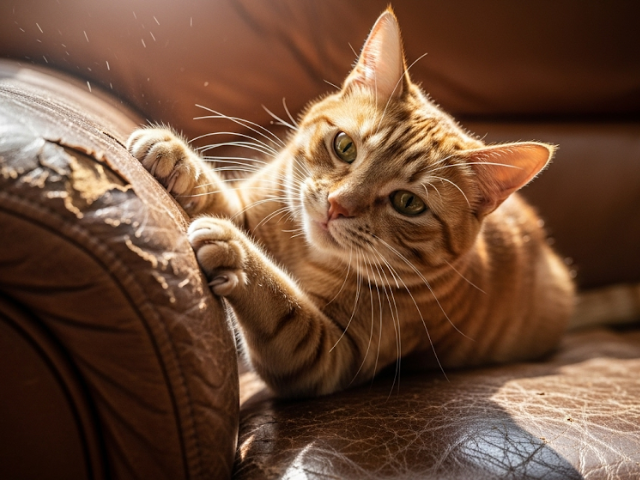
No, not permanently. We often choose leather because it is robust and lasts long. Most of the time, the scratches you see are just on the surface of the leather’s top finish. They aren’t deep gouges that have torn the material itself.
The good news is that you can often blend, buff, or fill in these tiny flaws. Your cat’s claws are more likely to create cosmetic issues than to cause structural failure of your sofa. A few stray marks on your furniture won’t kill it, but scratching the same spot over and over can cause much damage. The first thing you should do is to understand this difference. So relax; you can save your stylish living room.
You might be surprised at how easy this material is to work with. Softer, more natural leathers can show scratches more easily, but they’re often easier to treat with oils. On the other hand, coated or pigmented leathers have a protective layer that helps prevent damage. In most cases, there’s a way to fix the issue without having to kick your cat out of the living room.
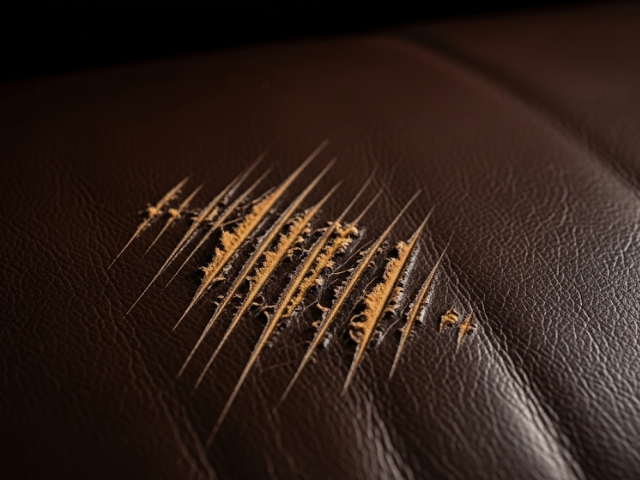
It’s a million-dollar question for many pet owners—and the answer is absolutely yes! The success of your repair depends on the severity of the scratch and the type of leather you have. If it’s just a minor surface scratch, you can usually pull off a repair to make it look almost invisible. These scratches are just on the surface and haven’t gone through the leather’s top layer.
For deeper scratches in leather, fixing it can be a bit tricky since they might go through the top layer and into the leather itself. They might not disappear completely, but you can make them look a lot better so they aren’t the first thing that catches your eye.
Instead of being a total eyesore, those scratches can tell a story about the furniture’s history. With the right tools and a little patience, you can restore your leather from those pesky cat scratches.
It’s comforting to know that a cat scratch on a leather sofa is something you can easily fix. The trick is to keep your anticipations in check and pick the right way to tackle the problem. You wouldn’t slather leather oil on a deep tear, just like you wouldn’t slap a bandage on a broken bone, would you? By matching the repair technique to the damage, you’ll be amazed at the results you can achieve.
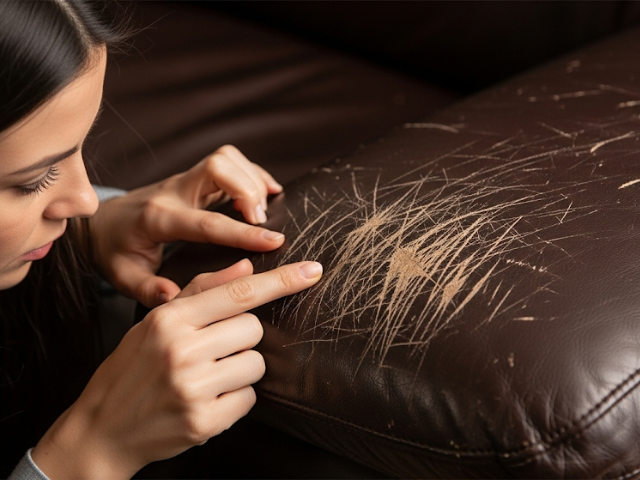
Before you can fix your leather sofa, identify the problem first. Look closely at your leather sofa that your cat scratched and figure out what you have. Run your fingers over the scratches—are they light lines that you can barely feel, or are they deeper grooves with rough edges? This quick check will help you figure out the best way to fix it.
The next step is to clean the area with a good leather cleaner or a soft, damp cloth with mild soap and water. Wipe the scratched area and the surrounding leather to remove dust, dirt, and oils. It helps repair products stick better and prevents dirt from causing more damage. Ensure that everything is thoroughly dry before you proceed.
This initial assessment is vital for fixing the cat scratch on your leather sofa. You are lucky if the scratches are light and go away when you wet your finger and run it over them. That means the damage is only on the top coat, so all you need is a quick conditioning treatment. You may need to get more involved if the scratch is still there and feels rough. You might need a filler or a specialized repair kit to fix it.
Selecting the best method for the task is key to fixing cat scratches on a leather couch. You can use simple techniques with very few specialized tools for the most common and minor problems.
Here are some effective tricks for addressing various types of damage, from simple solutions for minor dings to more complex methods for significant scuffs.

If you have some minor, superficial scratches on your leather and the fibers aren’t ripped, this trick works. Grab a fresh, damp cloth—don’t soak it though—and cover the scratched area. Gently rub the damaged spot for about ten seconds while also using a medium-heat hair dryer. The leather might puff up a little from the moisture and heat, but it’ll help those little scratches blend right in.
Once heated, remove the cloth and gently buff the area with a soft, dry cloth in a circular motion. Avoid excessive heat, as it can cause the leather to contract, or worse, damage it. Keep the iron or hair dryer moving to distribute heat evenly and prevent scorching your furniture.

To address noticeable scratches on leather that haven’t damaged the surface, a high-quality leather oil or conditioner is essential. These products work to rehydrate the leather, allowing the scratched area to blend in and become less visible. By darkening the lighter scratch, they help it match the surrounding color, making this a crucial step in repairing cat scratches on leather furniture.
First, ensure the surface is dry and clean. Then, apply a small amount of leather oil, conditioner, or even olive oil to a soft, lint-free cloth. Gently massage the oil into the scratch and the surrounding area with small, circular motions. Allow it to sit for about an hour, or follow the product’s instructions.
Afterward, use a fresh, dry cloth to wipe away any excess oil. For more stubborn marks, a second coat may be necessary, but you’ll often see noticeable improvement right away.
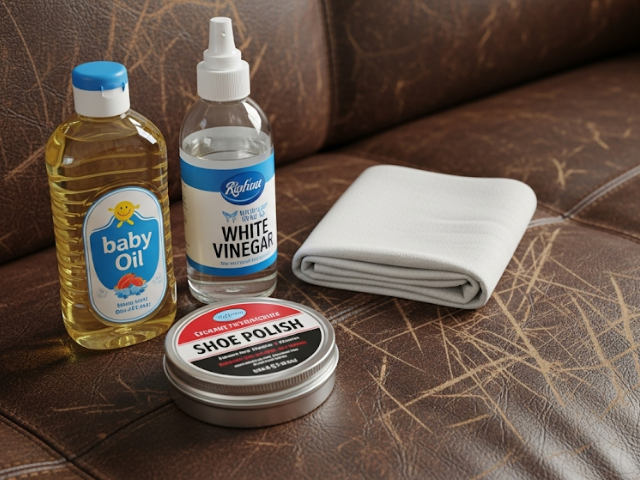
If you know how to fix cat scratches on your leather furniture, you can save a trip to the store for those minor repairs. You can grab some items you already have at home. These tricks are effective on light scratches and certain types of leather. Just remember to test any home remedy on a small, hidden spot first, such as the back of a cushion, to ensure it won’t change the color or cause damage.
Using oils like olive oil or baby oil can effectively rehydrate leather and minimize scratches, like commercial conditioners. To apply, use a cotton swab or soft cloth to dab a small amount onto the scratch, blending it outwards at the edges. Let it rest, then buff the area. Keep in mind that while some food-grade oils can turn rancid over time, it doesn’t happen very often.
White vinegar can help fix cat scratches on leather furniture. Mix equal parts distilled white vinegar and water, and gently clean the scratched area. For light scratches, this may suffice. For deeper scratches where color is lost, apply color-matched shoe polish with a cotton swab, allow it to dry, and then buff to a shine.
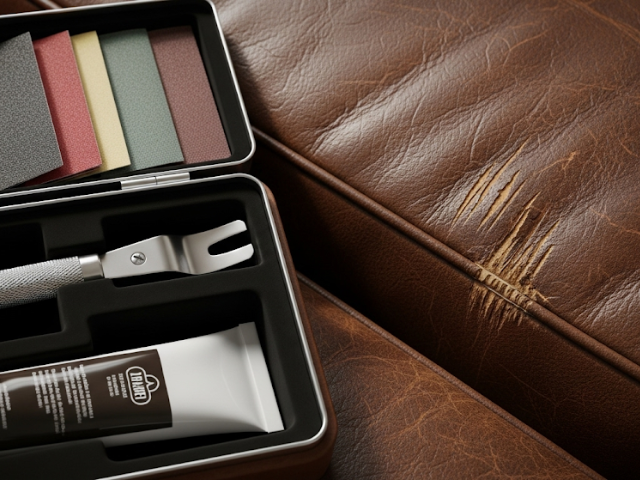
For deep scratches or irreparable damage that DIY fixes can’t handle, a leather repair kit is your best option. These kits address severe issues, such as deep scratches, tiny rips, or damage caused by repeated cat scratching.
If you can feel a noticeable groove with your fingernail or see frayed leather fibers, using a repair kit will help you achieve a flawless repair. A quality cat scratch leather repair kit includes all the necessary supplies, so don’t stress about it.
An applicator, fine-grit sandpaper, a leather filler or heavy repair compound, a colorant that you can mix to match your furniture, and a sealant or finisher are all common components of a leather repair kit. Filling the scratch, smoothing it, matching the color, and sealing it for protection are the steps to take. Although it involves several steps, the outcome can be astounding, almost eliminating deep gouges.
The kit is easy to use. You start by cleaning the area and cutting off any loose fibers. The filler compound is then applied in thin layers, frequently with light sanding in between, until the scratch is level with the leather surface.
Once it’s smooth, you carefully apply the mixed colorant, followed by the clear finisher to preserve the repair and match your sofa’s sheen. The secret to success is to follow the directions in your leather repair kit.
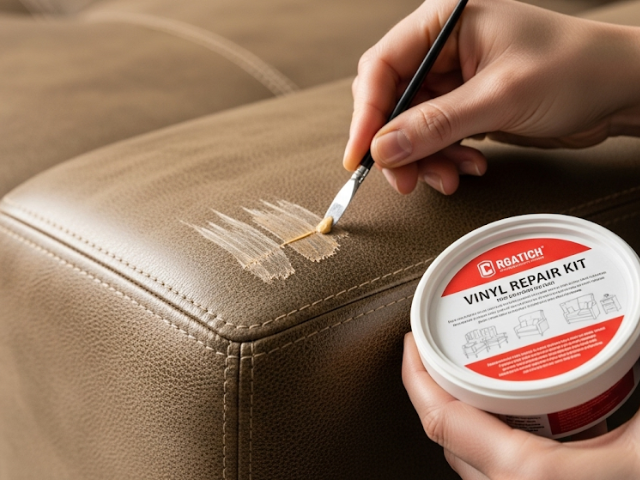
Because faux leather is not the same as genuine leather, you need to learn how to fix cat scratches on it. Pleather, vinyl, or faux leather is a plastic layer over a fabric base. It isn’t porous like the real thing, so oils and conditioners won’t soak in, causing a greasy mess. Using the wrong products can only harm the finish.
To repair minor scratches on faux leather, lightly clean the surface. For deeper scratches or holes, a vinyl and leather repair kit is necessary. These kits are effective for synthetic materials and work similarly to those for genuine leather. Be sure to choose a kit made for vinyl or faux leather.
The steps for using a faux leather repair kit are the same: clean the area, fill it in, match the color, and seal it. Some kits even include textured grain paper since faux leather often has a smooth texture.
Place this paper on the wet repair compound and press it down to create a leather-like pattern, helping the patch blend in flawlessly. If you know how to repair cat scratches on faux leather the right way, you won’t make the problem worse.
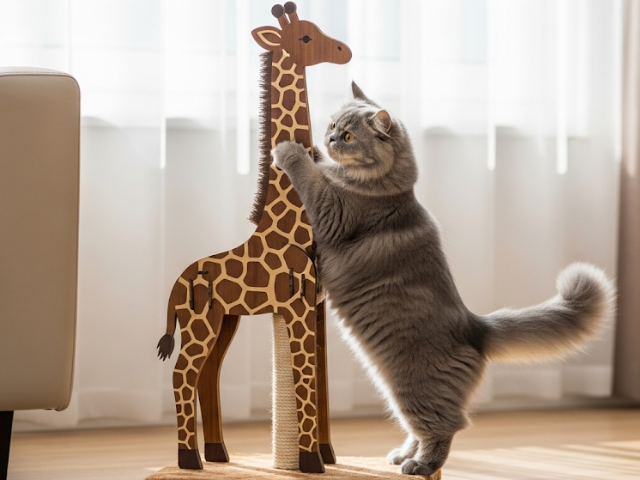
To keep your cat from scratching furniture after you’ve repaired the scratches, make sure to provide appealing alternatives. Offer sturdy, tall sisal rope scratching posts or cardboard scratching pads. Place them near their favorite scratching or sleeping spots.
Another easy yet effective step is to trim your cat’s nails regularly. It helps make their claws duller and less harmful. You could also try using those soft plastic nail caps that go over their claws for a few weeks. They let your kitty retract their claws without any fuss while still keeping your furniture safe from scratches!
Lastly, to lessen the furniture’s appeal to your fur baby, use a citrus-based spray on your sofa to deter cats, as they dislike the smell. Alternatively, apply double-sided sticky tape to furniture corners to discourage scratching due to its tacky feel. A stylish throw blanket can also protect leather while refreshing your space.

Living with pets and beautiful furniture is a balancing act. A few traces of life—and a few minor scratches on the couch—can give a house character because it’s a home, not a museum.
However, learning how to repair cat scratches on leather furniture gives you the confidence and strength to deal with those minor accidents. It turns a panic attack into a doable task, freeing you up to concentrate on what counts—the love and joy your pet brings into your home. Go, hug your cat without worries, learn the practical skills, and safeguard your investment.

